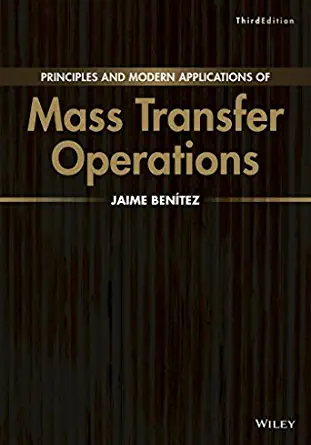
A long vertical cylinder of radius R and length L is rotating with constant angular velocity within a large body of fluid. Here, we are going to study the steady-state velocity profile that develops within the fluid around the rotating cylinder. Postulates: - Laminar flow - Newtonian fluid with constant viscosity and constant density . - Cylinder is very long; therefore, the end effects are negligible. - Body of fluid around the cylinder is infinitely large. - vr=0 and vz=0 - Pressure within the fluid is not a function of . Answer the following questions in terms of parameters: ,,,R, and L. 1. Write down the mass balance (equation of continuity) within the fluid and demonstrate that v is not a function of . 2. Write down the momentum balance (equation of motion) and derive an ordinary differential equation for v and integrate it to get an equation for v as a function of r with two integration constants. 3. Write down two boundary conditions for v and evaluate the two integration constants. 4. Write down the convective flux and viscous flux of -momentum (v) within the fluid as function of r. 5. What is the sheer force of the liquid on the surface of the cylinder? How much power is required to rotate the cylinder? A long vertical cylinder of radius R and length L is rotating with constant angular velocity within a large body of fluid. Here, we are going to study the steady-state velocity profile that develops within the fluid around the rotating cylinder. Postulates: - Laminar flow - Newtonian fluid with constant viscosity and constant density . - Cylinder is very long; therefore, the end effects are negligible. - Body of fluid around the cylinder is infinitely large. - vr=0 and vz=0 - Pressure within the fluid is not a function of . Answer the following questions in terms of parameters: ,,,R, and L. 1. Write down the mass balance (equation of continuity) within the fluid and demonstrate that v is not a function of . 2. Write down the momentum balance (equation of motion) and derive an ordinary differential equation for v and integrate it to get an equation for v as a function of r with two integration constants. 3. Write down two boundary conditions for v and evaluate the two integration constants. 4. Write down the convective flux and viscous flux of -momentum (v) within the fluid as function of r. 5. What is the sheer force of the liquid on the surface of the cylinder? How much power is required to rotate the cylinder







